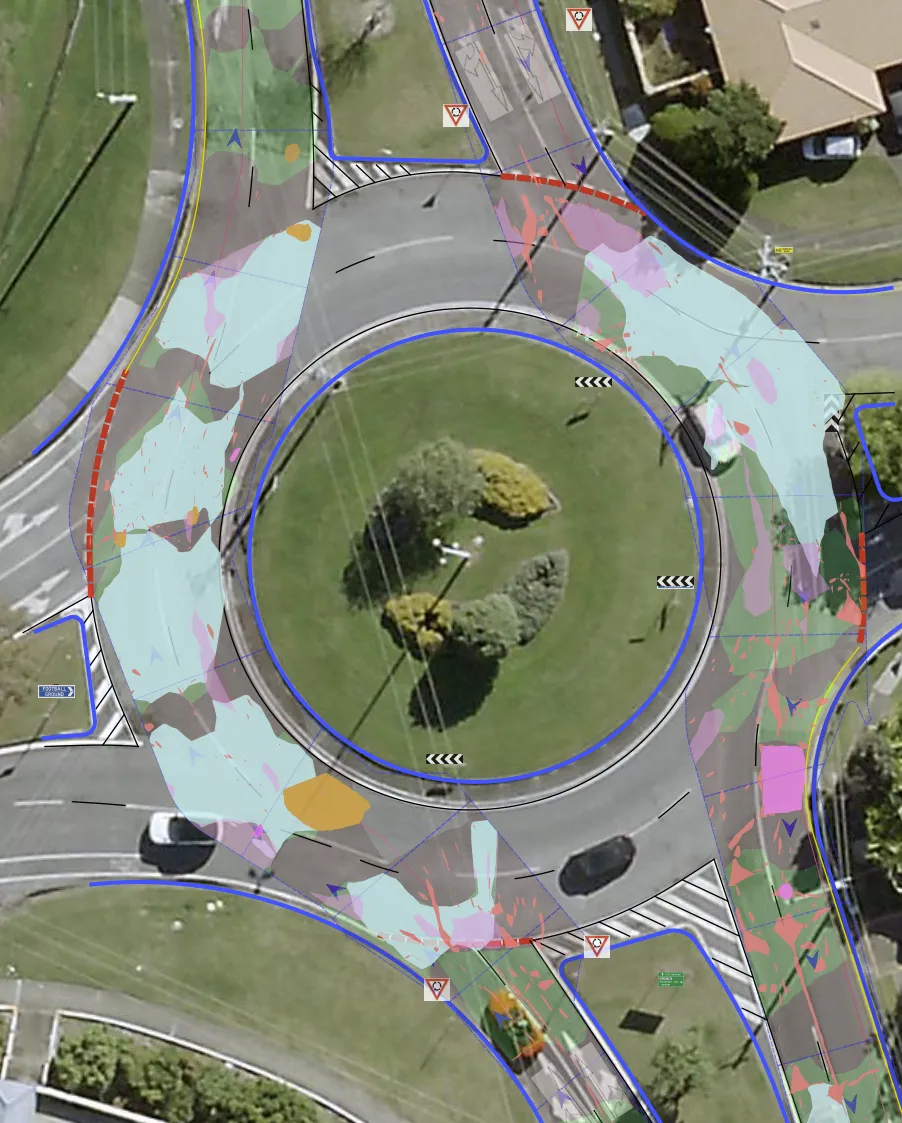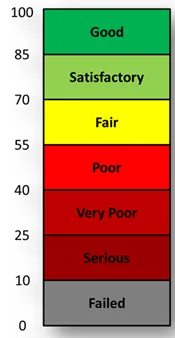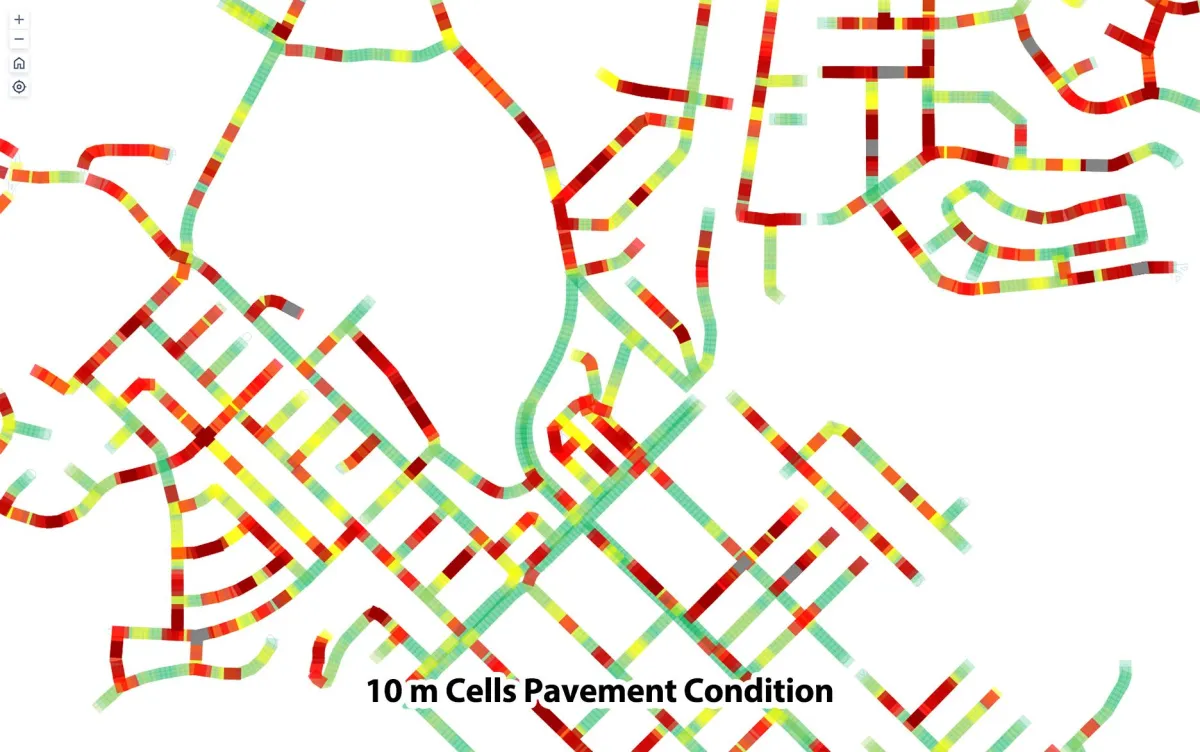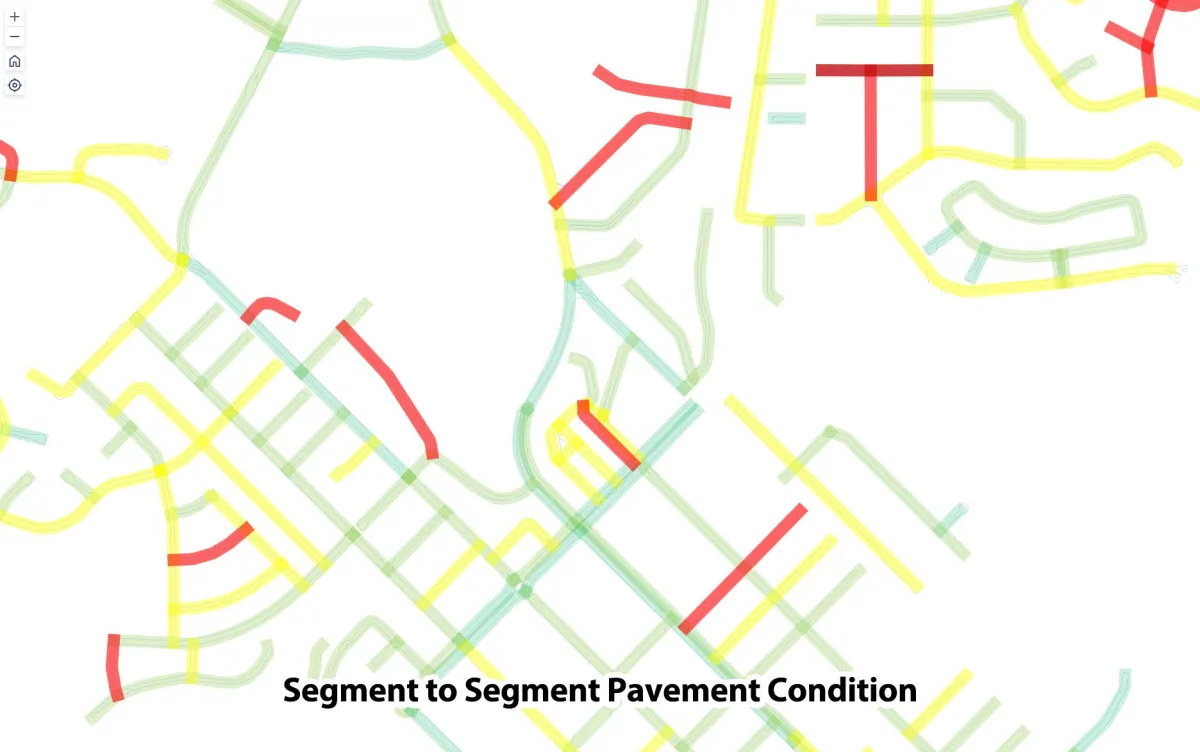Pavement Conditions
More than just potholes
Capture High Quality Pavement Data.
FASTER
The Cyvl sensor fuses RTK GNSS, 3D LiDAR and high resolution imagery to generate multi layered maps of defects on the pavement surface.
The use of imagery and LiDAR enhances the results of each data set.
More reliable, repeatable pavement defect analysis.
Defects are measured for area and severity, the data used in determining a Pavement Condition Index (PCI) of the 10 meter and at the asset register segment length.



What is Measured, Matters.
Accurate and regular PCI assessments enable benchmarking of road performance with unprecedented precision.
By analysing detailed annual condition data and contextual information, patterns predicting localized pavement deterioration can be identified. This ensures that we stay ahead of the curve by mitigating risks before they transform into costly problems.
Customization of Maintenance ProgramsThe granularity of Cyvl’s pavement assessments allows for the development of your customized maintenance programs tailored to specific road sections with fine granularity. This granularity ensures that interventions are appropriate and sustained, maximizing pavement quality and performance.
Strengthened Public Trust and TransparencyDetailed and transparent reporting of pavement conditions and resultant maintenance actions fosters public trust. By ensuring that road users are aware of the steps taken to maintain and improve infrastructure, Civiltech Solutions highlights its commitment to community well-being and infrastructure excellence.
Pavement Condition Index (PCI).
A pavement scoring metric that evaluates the health of road surfaces.
Developed by the U.S. Army Corps of Engineers and standardized through the ASTM D6433 standard, PCI ranges from 0 (failed) to 100 (excellent), offering a comprehensive snapshot of pavement performance.
This score is derived from detailed assessments of surface distress types, such as cracking, potholes, and ravelling - such as the measurements and insights derived from the Cyvl sensor and platform.
The PCI score encompasses three critical components: distress severity, defect type, and affected area.
Severity assesses the intensity of each defect, ranging from minor surface issues to significant structural problems.
Defect type includes common afflictions such as cracking, potholes, and raveling, each providing specific cues for targeted interventions. Lastly, the
Affected area measures the extent of the distress across the pavement, facilitating precise planning and resource allocation.
Accurate PCI measurements empower council's with knowledge to confidently prioritize capital maintenance, optimize budgets, and extend the lifespan of their road networks in an economical way.

Case Study
1,000 kilometers of Roadway Data.
Captured in 5 Days
Learn how Cyvl enabled Oyster Bay, NY to capture 733 miles of pavement data 12X faster than traditional methods.

Contact us
Suite 34, Darwin Innovation Hub,
Level 1, 48-50 Smith St Mall,
Darwin City NT 0800,
Australia
0427 142 252



